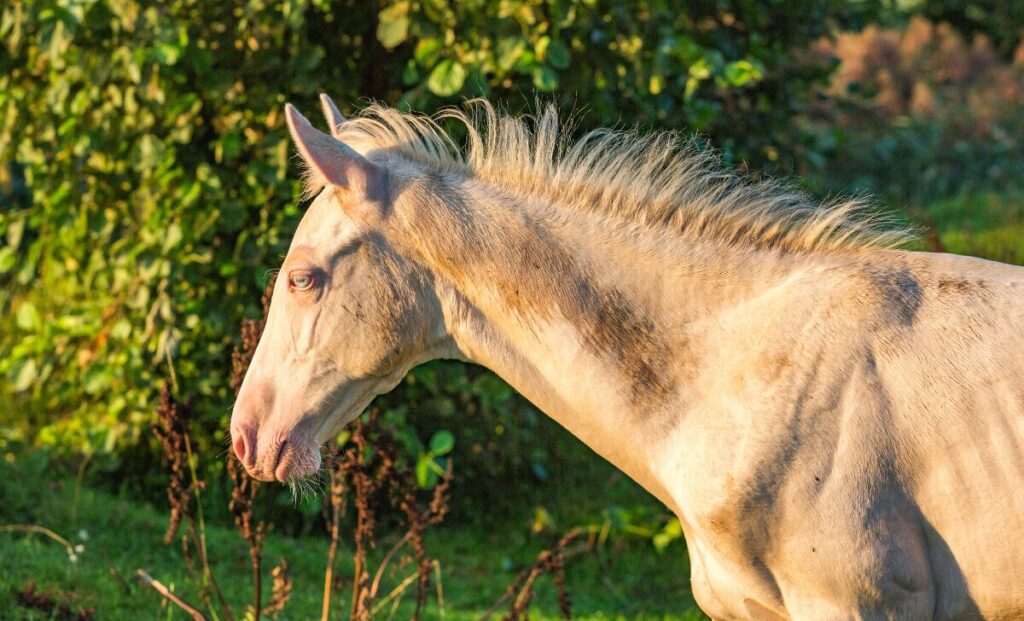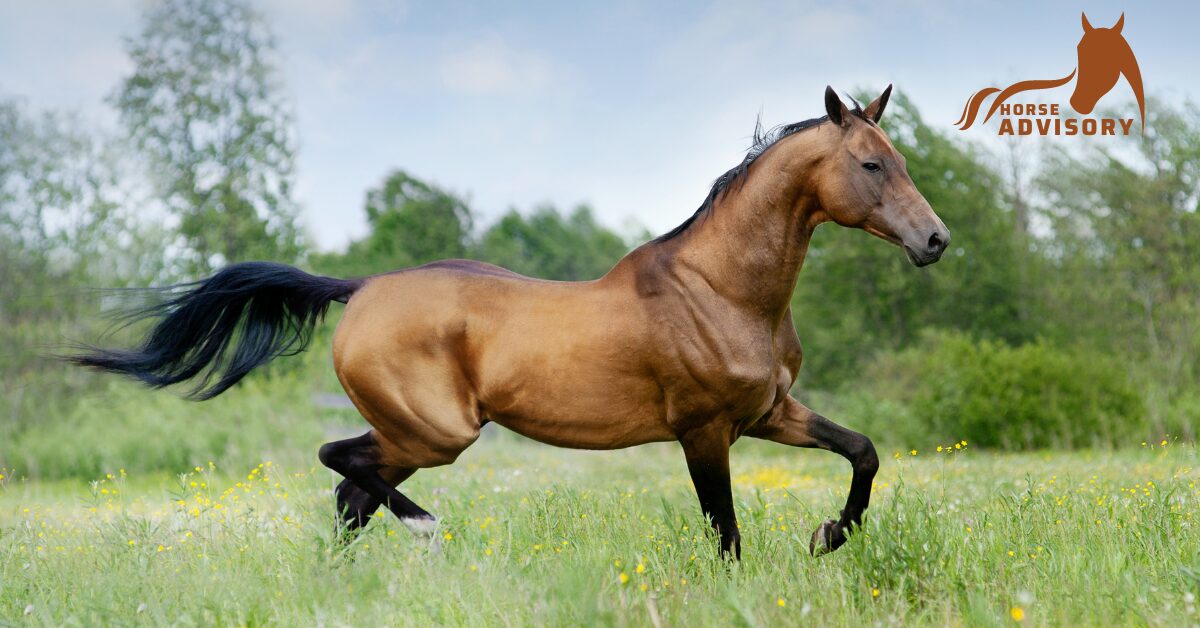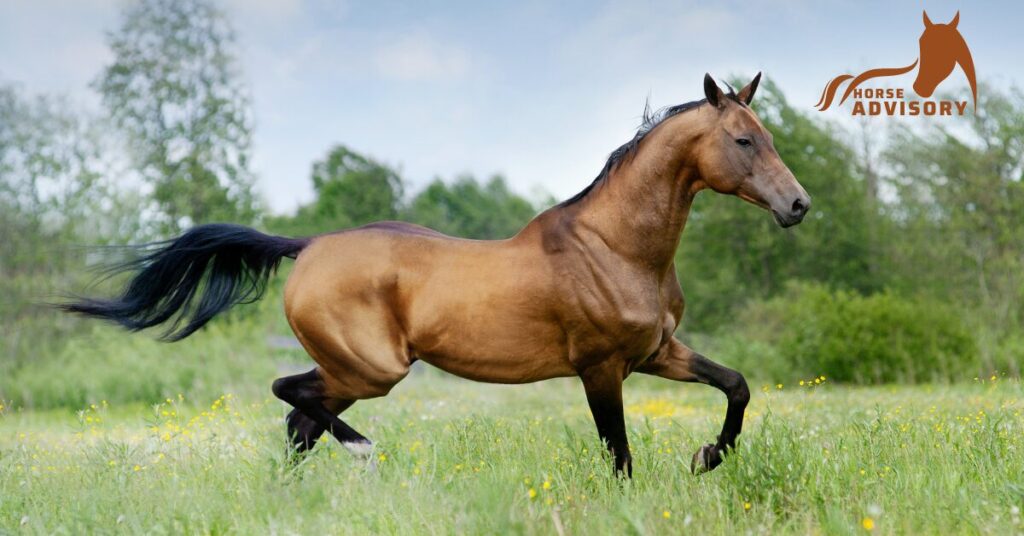The Akhal-Teke is one of the oldest types of horses that people have kept as pets. It was made to last long distances and run fast. Some horse riders think this breed is too thin and not wide enough, and it doesn’t look like the usual strong, big-chested horse breeds used for riding. Others think it’s very beautiful, both in how it looks and how it moves. No matter what you think, the Akhal-Teke is one of the rarest and most special full-sized horse breeds all over the world.
Let’s find out more about the Akhal-Teke’s past, how it looks, its personality, and more.
History and Origins
The Akhal-Teke, a breed with roots steeped in antiquity, is regarded as one of the oldest horse breeds that have survived to this day. The lineage of these remarkable horses can be traced back over 3,000 years, making them a living link to the ancient world. Their origins take us back to the arid and unforgiving landscapes of Turkmenistan, where they first emerged. It is here, amidst the harsh desert conditions, that the Akhal-Teke breed developed its distinctive traits and characteristics.
The Akhal-Teke derives its name from the Teke tribe of the Akhal oasis in Turkmenistan. The Teke tribe, known for their nomadic lifestyle and deep-rooted equestrian culture, were the original breeders of these horses. The tribe members bred and trained these horses for survival and endurance, as they relied heavily on them for transportation across the vast, rugged terrains of Central Asia. The bond between the Teke tribe and their horses was not just functional but also deeply emotional, with the horses often being considered as part of the family.
The severe conditions of the Turkmen desert played an integral role in shaping the Akhal-Teke breed. Over centuries, these horses evolved to withstand extreme temperatures, scarce water, and limited food sources. This challenging environment led to the development of the breed’s unique resilience and adaptability. The Akhal-Teke’s ability to survive and thrive in such harsh conditions is a testament to their extraordinary endurance and hardiness. These traits, coupled with their striking beauty and intelligence, have contributed to the Akhal-Teke’s status as one of the most revered and fascinating horse breeds in the world.

Overview
WEIGHT: 900 to 1,000 pounds
HEIGHT: 14 hands (56 inches) to 16 hands (64 inches)
BODY TYPE: Fine-boned, flat-muscled build; long, narrow head and neck; hooded or almond-shaped eyes; distinctive metallic coat
BEST FOR: Owners and riders with equine experience
LIFE EXPECTANCY: 20 years
Size
Akhal-Tekes are a medium-sized breed, typically standing between 14.2 and 16 hands high. They are known for their slender, athletic build, characterized by a deep chest and long, powerful legs.
Breeding and Uses
The Akhal-Teke, originally bred in the harsh Turkmen desert, was created for survival and dependability. The nomadic tribes who developed this breed needed a horse that could withstand extreme conditions while providing a reliable means of transportation. This need resulted in a breed with an impressive ability to endure, making the Akhal-Teke a strong and versatile horse. Their history as desert horses has instilled in them unmatched endurance and hardiness, traits that are still evident today.
In the modern world, the Akhal-Teke’s grace, intelligence, and sensitivity make them excellent sport horses. They have a natural elegance and athleticism that lend themselves well to a variety of equestrian disciplines. Whether it’s dressage, where precise movements and a deep connection between rider and horse are key, or jumping and endurance riding, which require strength, agility, and stamina, the Akhal-Teke excels. These horses are not just survivors but also performers, showcasing their versatility and talent in various equestrian fields.
Colors and Markings
One of the defining characteristics of the Akhal-Teke is its distinctive metallic coat. This unique sheen gives their coat a radiant, almost glowing appearance, particularly noticeable in sunlight. The shimmering effect is most prominent in palomino and golden shades, enhancing the Akhal-Teke’s overall elegance and beauty. This dazzling coat, combined with their sleek physique, lends them an ethereal quality unlike any other breed.
Beyond the famous golden shades, the Akhal-Teke comes in a variety of colors, including black, bay, gray, and chestnut. Regardless of the color, the metallic sheen remains a constant, adding depth and richness to their coat. This unique glow has earned them a fitting nickname – “Golden Horse of the Desert.” This moniker not only highlights their stunning appearance but also pays tribute to their desert origins, linking their past and present in a beautiful, shimmering tapestry.
Characteristics
Akhal-Tekes are celebrated for their speed, agility, and endurance, qualities that have been honed over centuries of survival in harsh desert conditions. Their physical prowess is complemented by their intelligence and sensitivity. These horses are known for their quick learning ability and their keen sense of their surroundings. They form strong emotional bonds with their owners, a testament to their loyal and affectionate nature.
Their movement is another aspect that sets them apart. Akhal-Tekes move with a grace and fluidity that is often likened to dancers. Their strides are smooth and rhythmic, reflecting an inherent elegance. This, coupled with their endurance, makes them exceptional performers in various equestrian disciplines, from dressage and jumping to endurance riding.
Diet and Nutrition
Akhal-Tekes have a remarkable ability to thrive on minimal food and water, a trait born out of their desert origins. Despite this, it’s crucial to provide them with a balanced diet to ensure their health and performance. Quality hay and grains should form the core of their diet, supplemented with fresh fruits and vegetables as treats.
While they can survive on less, access to plenty of fresh water is essential. Regular feeding schedules and careful monitoring of their diet are necessary to prevent nutritional deficiencies or excesses. Their dietary needs may also change based on their age, work level, and health status, requiring adjustments as needed.
Health and Behavior
In terms of health, Akhal-Tekes are generally robust, with few breed-specific issues. However, they are susceptible to certain genetic conditions. One such condition is “naked foal syndrome,” a lethal disorder affecting the skin. Regular vet check-ups and genetic testing can help detect and manage these conditions early.
Behavior-wise, Akhal-Tekes are known to be loyal and intelligent. They can sometimes come off as reserved, especially around strangers, but they warm up quickly once a bond is formed. These horses respond best to consistent, gentle handling. Their intelligence and sensitivity require handlers to be patient and understanding, fostering a relationship built on trust.
Grooming
Despite the unique metallic sheen of their coats, Akhal-Tekes do not require specialized grooming. Their grooming routine mirrors that of most horse breeds. Regular brushing is necessary to remove dirt and loose hair, which also helps maintain the shine of their coat.
Standard equine care, including hoof cleaning, dental check-ups, and regular vet visits, should be part of their routine. Regular grooming not only keeps the Akhal-Teke looking its best but also provides an opportunity to check for any signs of health issues, such as skin conditions or injuries. Despite their resilience, these horses appreciate and benefit from regular care and attention.
The Golden Horse of the Desert
The Akhal-Teke, often referred to as the “Golden Horse of the Desert,” is a horse breed known for its unique, metallic coat. This shimmering sheen is one of the defining characteristics of this breed and is highly prized among horse enthusiasts worldwide. The coat comes in various colors, from black to chestnut, but it’s the palomino and golden shades that are the most famous. These hues, combined with the metallic sheen, give the Akhal-Teke a truly radiant appearance, making them stand out in any crowd.
The metallic sheen of the Akhal-Teke’s coat is not just a result of their color but is also due to the structure of their hair shafts. Unlike other breeds, the hair shafts of the Akhal-Teke have a unique structure that reflects light in a particular way. When sunlight hits their coat, it bounces off the hair shafts, giving the entire coat a glowing, almost iridescent appearance. This unique feature adds a touch of magic to their already impressive physique.
This characteristic sheen, combined with their desert origins, has earned the Akhal-Teke the endearing nickname “Golden Horse of the Desert.” This moniker captures the essence of the breed – their resilience, elegance, and the radiant glow of their coat that resembles the golden sands of their native Turkmenistan. Whether they’re standing still in a field or galloping in full stride, the Akhal-Teke’s metallic coat shimmers in the sunlight, reminding everyone of their unique heritage and extraordinary beauty.
Unrivaled Endurance and Grace
Beyond their stunning appearance, the Akhal-Teke horses are renowned for their remarkable endurance and agility. They have a slender, athletic build with a deep chest and long, powerful legs. These physical attributes, combined with their natural endurance, made them the horse of choice for the nomadic tribes who needed reliable transportation across the harsh desert terrains.
Their grace and elegance are also evident in their movement. With a smooth and fluid gait, they are often compared to dancers. This gracefulness, coupled with their intelligence and sensitivity, makes them excellent sport horses, excelling in disciplines like dressage, jumping, and endurance riding.
A Symbol of National Pride
In Turkmenistan, the Akhal-Teke is more than just a horse breed – it’s a symbol of national pride. The horse is so revered that it’s featured prominently on the country’s coat of arms and its national emblem. In 1993, the President of Turkmenistan declared a national holiday in honor of the Akhal-Teke, which is celebrated annually on the last Sunday in April.
Pros of Akhal-Tekes
Akhal-Tekes are intelligent, versatile, and hardy, with incredible endurance. They are excellent in various equestrian sports and are known to form strong bonds with their handlers. Their unique coat color also makes them stand out in a crowd.
Cons of Akhal-Tekes
Their rarity makes them quite expensive. They can also be somewhat aloof, requiring a patient and understanding handler. Their sensitivity to harsh training methods means they need a gentle approach to training.
The Akhal-Teke is a breed like no other, steeped in history, and possessing a unique combination of beauty, strength, and resilience. Owning one is both a privilege and a responsibility, given their rarity and the need to preserve this unique breed for future generations.
Preserving the Legacy
Today, there are only about 6,600 Akhal-Tekes in the world, making it one of the rarest horse breeds. Efforts are being made to preserve this unique breed, with breeding programs in place not just in Turkmenistan, but also in Russia, Europe, and North America.
Discovering the Akhal-Teke is like stepping into a tale as old as time. These ‘Golden Horses of the Desert’ carry within them the rich history and resilient spirit of the Turkmen people. Their rarity and striking beauty make them one of the most fascinating horse breeds in the world, a true testament to the wonders of nature and the enduring bond between humans and horses.





